I found a paper I gave at a Neo-Marxist conference (“A World To Win”, London) in 2007. At the time I had just moved to Cambridge, where I was using Francophone political philosophy to reflect and refract my sheer dissatisfaction with The Order of Things (à la Foucault). I was called to discuss Hegelian dialectics, as the basis of Marxism, at the conference. What I wrote is heavily theoretical, but it remains interesting because of my passion in the big ideas I portray and question. Ever the creative utopian, my calling is with art. In some ways I remain in this position now, in my new context and career with Art Psychotherapy. If you can bear the abstruse verbiage, do read. Glimmers of light emerge, particularly at the end.

“Contesting dialectics as the key to changing the world”
1.
You can form a beautiful picture in your head with Hegel’s dialectic, with its sense of meaning in movement, and engaging with the method or process in trying to understand the nature of reality. This concept of sublation, or a sense of becoming that preserves and gives meaning, is powerful and important. Indeed, the value in Hegel lies in where and how his process of negation mobilises the quest to gain understanding of reality, and the contents of the present. From this Hegel’s ‘Logic’ brings forward what he calls “The Doctrine of Essence”, as the conclusion and summit of his understanding of the now, and our knowledge of it. This follows the movementfuelled by negation, along the path towards understanding the ‘now’, as consciousness curls around its contents and the contradiction in the ‘now’ is absorbed and synthesised, as a totality that moves towards self-consciousness. Hegel concludes that “When this movement is pictured as the path of knowing…this path is the movement of being itself.”
Now this, as a subjective, abstract idea in your head (if you can follow it) is all very profound, a deeply philosophical/existential experience which concerns thinking, one’s place within one’s thoughts, and the world itself.
It’s quite easy to get sucked in to Hegel, and soon be floating around in your head, delirious on dialectics…
2.
But we are here not just to contemplate and entangle ourselves somewhat narcissistically with abstract, enjoyable thought games, but to source and install the key to changing the world. As Marx said, “Philosophers have hitherto only interpreted the world in various ways; the point is to change it”. And if you look at how the dialectic system, even when brought down to earth and grounded by Marx, brings on a binary, restrictive logic that is totalized, fixed and synthetic (or artificial), and the effects of this on society and the world, you can perhaps see how such a logic cannot provide the fuel or economy to provide for a new and different present which can solve the current ‘eco-crisis’, or provide for ‘a sustainable social future’
The dialectic system forms an equation to value and absorb identity in terms of contradictions. In Hegel an identity is considered and defined in relation to what something is not. This places two things in an equation of two polar opposites, differentiated and segregated as dichotomous contradictions.
This forms a binary opposition where two terms are used to judge reality, like man/woman, black/white, young/old, reason/passion, subject/object, good/bad, truth/error, pass/fail; which sets up a hierarchy between these two parts. Whatever doesn’t fit so neatly into one of these two categories gets misrepresented or allocated into the same schema, according to the priorities or best wishes of some discursive or institutional practice. This dictates the way that we live.
Such ‘logocentrism’, or the formation of opposition in contradictory or different terms,brings on a hierarchical dichotomy. This is argued by Derrida in his rather strenuous methodology of ‘deconstruction’, which sought to undo and deconstruct the false dichotomies, or ‘oppositions’, inherent in dialectic thinking (be it Hegelian, Marxist or Platonic). Derrida says that this notion of “logocentrism” forms the tendency to think about fundamental philosophical concepts, like truth, reality, and being, in terms of ideas such as identity, presence, and essence; whilst limiting or ignoring the equally valid, opposite notions of otherness, absence, and difference. Because of this tendency, Derrida said that Hegel’s dialectic quest for “totality” has a necessary link to the political “totalitarianism” that A World to Win is here opposing. This is essentially why a dialectic theory of knowledge cannot be used as a key to change the world.
Let’s go back to Hegel, who argued that all differences can be contained and synthesised by his system, in fact nothing was outside his system – it forms all that there is, and all that there is not, tightly enclosed into a totality.
From his Logic: “In pressing forward to its true existence, consciousness will arrive at a point at which it gets rid of its semblance of being burdoned with something alien, with what is only for it, and some sort of ‘other’, at a point where appearance becomes identical with essence, so that its exposition will coincide at just this point with the authentic Science of spirit. And finally, when consciousness itself grasps this its own essence, it will signify the nature of absolute knowledge itself.”
So we have this lovely picture in our minds of our thoughts mediating our experience of the world, synthesising (or obliterating) any nasty ‘alien’that won’t fit in, any ‘other’that doesn’t tick the right boxes and would ‘burdon’ the absolute, and we get to self-consciousness of an abstract subjective, pure, sweet, totality.
Sigh.
But, as Marx said, any assumed unity of this state of mind is no more than that – a (delirious) state of mind, with some kind of abstract and mystified spirit hovering above an actuality, grounded by Marx in history, that is antagonistic, war-mongering and deeply divided by the dichotomous mode of thought that Hegel’s dialectic assumes, or projects onto existence. As Derrida argues, this becomes totalitarian politics, where the ‘alien other’becomes segregated, categorized and at times racially abused.
The link from Hegel’s enclosed system of dialectic contradiction is that the logic of opposition fixes a binary relation between categorized contents that brings on a totalitarian, regressive dynamic that determines and even dictates the way that we try to exist. This brings on the international picture of political unrest, identity-politics and terrorism that is shown by our contemporary climate, via the divisive logic of dialectical contradiction, and metaphysical division.
Now all this is very strong stuff and extremely complex. I do not mean to take any of it lightly, and I prepare to get roasted by the material dialecticians beside me. But I say this because I fervently support the need for change, but also that it is the dialectic method that we need to change
Here I’m going to introduce Theodor Adorno – a materialist dialectician whose subtle, complex and incredibly powerful argument in his ‘Negative Dialectics’ provides a dynamic that accounts for what won’t fit into Hegel’s system, what gets subordinated and segregated and demoralised by that system, what can disintegrate the totalizing teleological tautology of both Marx and Hegel’s dialectic logic.
Adorno Negative Dialectics: “…whatever happens to come into the dialectical mill will be reduced to the merely logical form of contradiction, and… the full diversity of the noncontradictory, of that which is simply differentiated, will be ignored. What we differentiate will appear divergent, dissonant, negative for just as long as the structure of our consciousness obliges it to strive for unity: as long as its demand for totality will be its measure for whatever is not identical with it. This is what dialectics holds up to our consciousness as a contradiction.”
Adorno argues that the truth of reality, or the ‘now’, remains from those contradictions themselves, rather than in their reconciliation, as residue or excess that what will not fit into Hegel’s neatly closed, triadic system. Whereas Hegel works backwards from his totalized synthesis, deducing his process from that, Adorno takes the core of meaning from the entry point of contradictions, and the excess – or their surface – which simply cannot fit into the binary relation set by Hegel’s dialectic. He analyses how dialectic subjectivity constructs barricades around those contradictions synthesised by negation, which leave outs and discriminates against the full content of the ‘now’. He describes how the negation fabricates a binary from the contradictions, which reduces everything to be categorised as such, within a totalising system that cannot account for the full diversity of what is “noncontradictory”, what won’t quite fit in.
Adorno argues that the essence of the ‘now’ is here – as the ‘alien other’or “indissoluble something”, the excess or precipitant on the surface of those contradictions, which unfold within and are constructed by, but neither contained nor resolved inside, Hegel’s dialectic process of negation. This comes to be labeled as ‘nonidentity’, segmented and segregated accordingly. Adorno takes the point in a similar way to Derrida, and also from Saussure’s structuralist argument, where identity is valued by what it isn’t. Here something is identified dialectically – in terms of its opposite. In reality this identification via a dialectic logic becomes labeled, judged and demoted under rule of law. Adorno takes this argument, and says that from this dialectic thinking requires the kind of racism that destroys the world – using the example of genocide at Aushwitz. What did not fit into the Herrenvolk, the blue blood of the Nazi ideal race, or the ‘other’ or ‘nonidentity, the Jew, the homosexual, was obliterated. This is a dialectic logic.
Now it has been the central problem of modern philosophy since Hegel, (or, some say, since Platonic duality even) to overturn this way of thinking – to find the way out of the dialectic synthetic, dichotomous, dangerous totalizing mind-frame, and form a different way of thinking and being in the world that does not judge reality into polar opposites, calling for new system and economy based on a multiplicity or plurality, the difference that does not fit inside the dialectic system, which can open or unfold its artificially synthetic totality.
One can see this in particular from Nietzsche, and the entire poststructuralist movement – Deleuze, Guattari, Foucault, Derrida, Heidegger, Lyotard.
Why I am touched by Adorno’s heavily complex nihilistic materialism is because although his works are difficult to read, sometimes they gleam with hope, when he argues that the truth of reality is in the ‘alien other’, the remainder, the precipitant, the non-identity, the ‘indissoluble something’, that evades the system, rather than in the concept that totalizes it. He says this ‘remainder’ can deconstruct or disintegrate the Hegelian dialectic. There is hope for us misfits yet.
3.
From this I think that the real revolution required to change the world is to break from the way that we are socially engineered and manipulated to see and judge reality in terms of punitive contradictions, and form and practice and lead from an entirely new way of thinking. How liberating it would be if two things could simply co-exist, rather than being necessarily opposed. This is a question not just for debating abstract thoughts, but to source and install the key that can change the world. We need a practical method of how to make this happen – via an interactive interface that can span and spread, like a rhizome, across the world.
Firstly who are we reaching out to? Adorno’s Negative Dialectics is powerful and subtle because he engages with what won’t fit into the tight systematic enclosure of dialectics – what isn’t quite only either something and its opposite, segregated as contradictory ‘non-identity’. Adorno’s argument is that although the dialectic cannot contain all that there is in the momentous flux and range of reality, and it is those on the surface line, those who don’t fit, those that get labelled and tarnished as ‘non-identity’, as ‘alien’ or ‘other’ – they can and will disintegrate the system. This is Adorno’s Logic of Disintegration. This dynamic has yet to be understood, nor engaged with. As Adorno says, “The power of that negativity holds real sway to this day. What would be different has not begun as yet.”
This is our task. What won’t fit in can change what pushed them out. I think this dynamic or principle might be what AWTW wishes to engage with to source the key to changing the world, although I am arguing that this requires and necessitates by evading and breaking from the dialectic system. How to take this to society and engage with people, in the name of ‘composting capitalism – from eco-crisis to a sustainable social future’ requires a revolution (of a different kind) – to change the way that we have been socially engineered to think. To get out of Platonic metaphysics, Cartesian duality, Hegelian contradictions, Kantian categories, fascist or totalitarian politics – so that the world provides a natural, open interface where two things, and all things, juxtaposed can simply co-exist and live together, rather than being necessarily in opposition.
Movetoart
To answer the how brings us to a question of artistry, connection, diplomacy, education, inspiration – that can build a network which can stretch a network around the world to grow a new way of being.
At this point I’m fuelled by Nietzsche, whose aestheticism, amidst his stirring, psychotic wit, provides an understanding about how art can aid one’s being-in-the-world. As he writes in The Birth of Tragedy: “Art saves him. And through art life saves him, for itself.”
Pause.
Why art is so powerful is because the sublime experience, and the creation of artworks, can provide a way to break out of the contradictions by which we are socially engineered to judge reality. Here I’m influenced by Deleuze’s LogicofSensation, Foucault’s The Order of Things, and Thought From Outside, Guattari’s Chaosmosis– but most of all my experiences with artworks, artists, and the world itself.
Over the summer I went across Europe on ‘The Grand Tour’, to follow the art fermenting through monumental shows of contemporary art that opened in succession around the Continent. The art I saw, and the world I saw, throughout this all seemed to be reacting to the contradictions, dichotomies and the logic of opposition that determine, segregate and dictate the way that we exist. This concerned the loss of identity (and censure of what is considered as ‘non-identity’) in a globalized, institutionalized world, along with the effects this has had on the world – its eco-crisis, humanity’s crisis. As the curator at the Venice Biennale, Robert Storr, said
“Sadly this is a period when ideological, cultural and religious antagonisms — rather than ‘nature’ — drive man to kill his fellow man, to imprison and torture him. These horrors are visible in the glass art holds up to the world, though reality’s ugliness may be transformed into a terrible beauty or crystallized into a prism through which we can examine the human flaws that produce it.”
Now you and I may disagree that the problems in the world have much to do with dialectic or Platonic logic, but we might find powerful neutral territory in the ways that art can help build a sustainable social future. For in creating and sensing works of art we can make a safe space where we can play and discover the world. I believe that in here we can move the contradictions that compose and have decomposed the world to a paradox — where both can exist together, not in opposition but from the beauty, interaction texture of our differences.
Pause.
We can begin in this space, possibly coexist with others, and recreate the world. This is the logic of those sensations that we can receive when one engages with art, and in the act of creation.
We need a way to activate and ensure the coexistence and insight that can be sensed and discovered from works of art. One can express and move this need by creating, expressing and sharing one’s beliefs and hopes, without having to blow oneself up or segregate into opposition, in order to portray or effect the world.
Now we need to plot sensuous pointers that can connect and map our rights in a new, holistic, living world; and most of all the humility and courage to begin again, from the most basic, simplistic connection that can be sensed from artworks, which disintegrates the contradictions and division that has deconstructed the world. To move from this aesthetic experience to political or sociological, practical logistics requires an expansive inter-connection, the identification of the needs and rights that count, and the demonstration of just how to unfold a world that works from these.
©Lorna Collins, September 2007





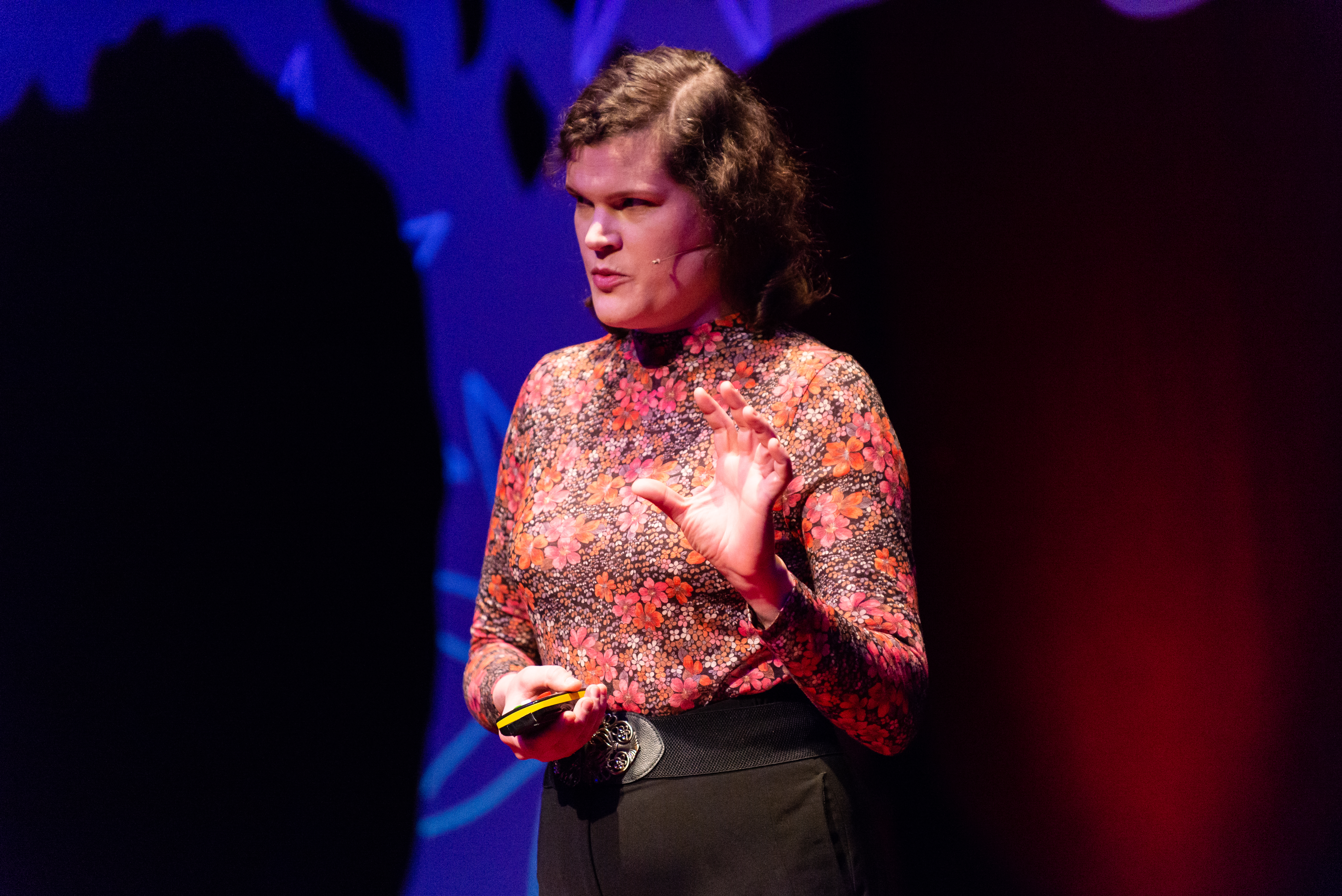




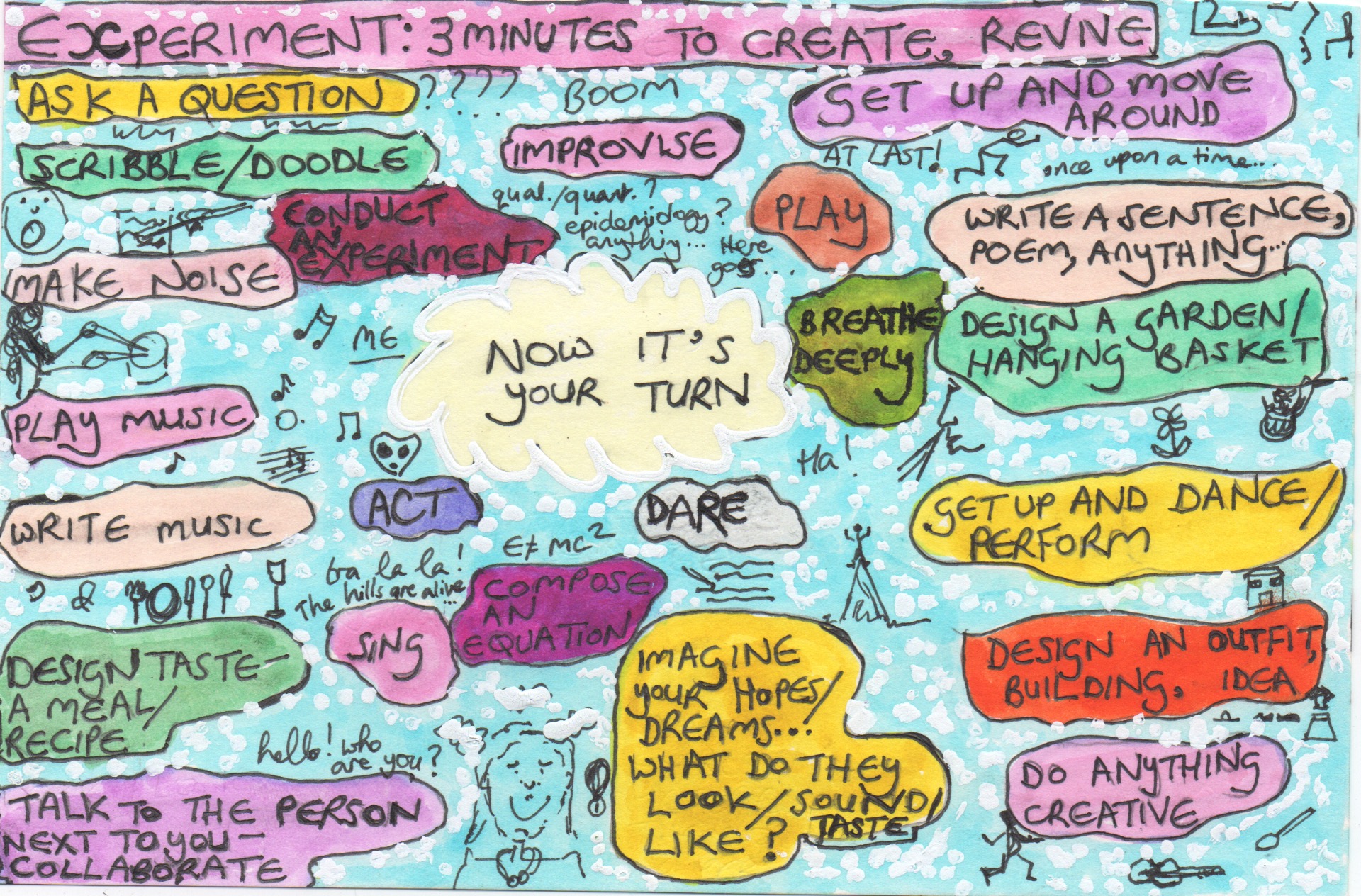







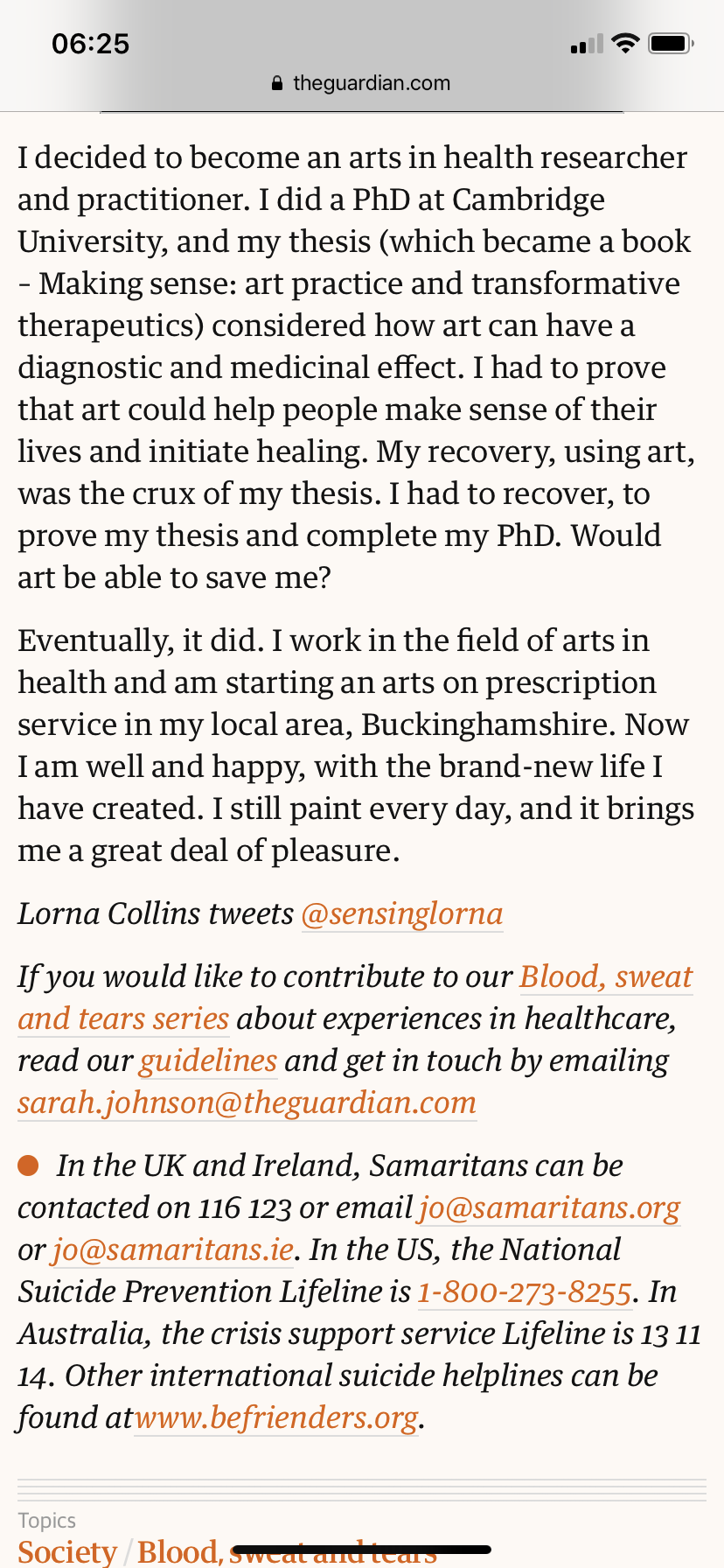




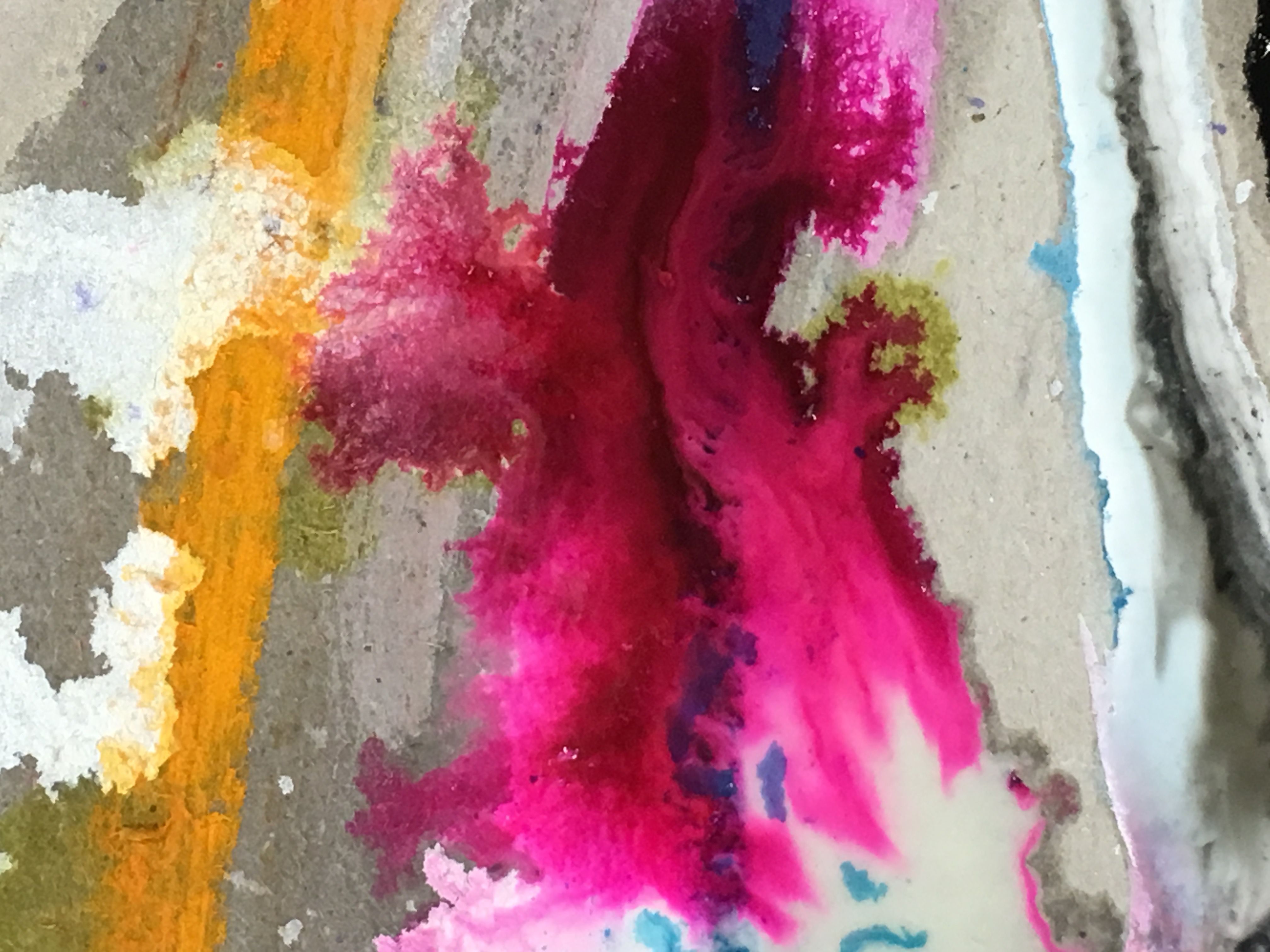





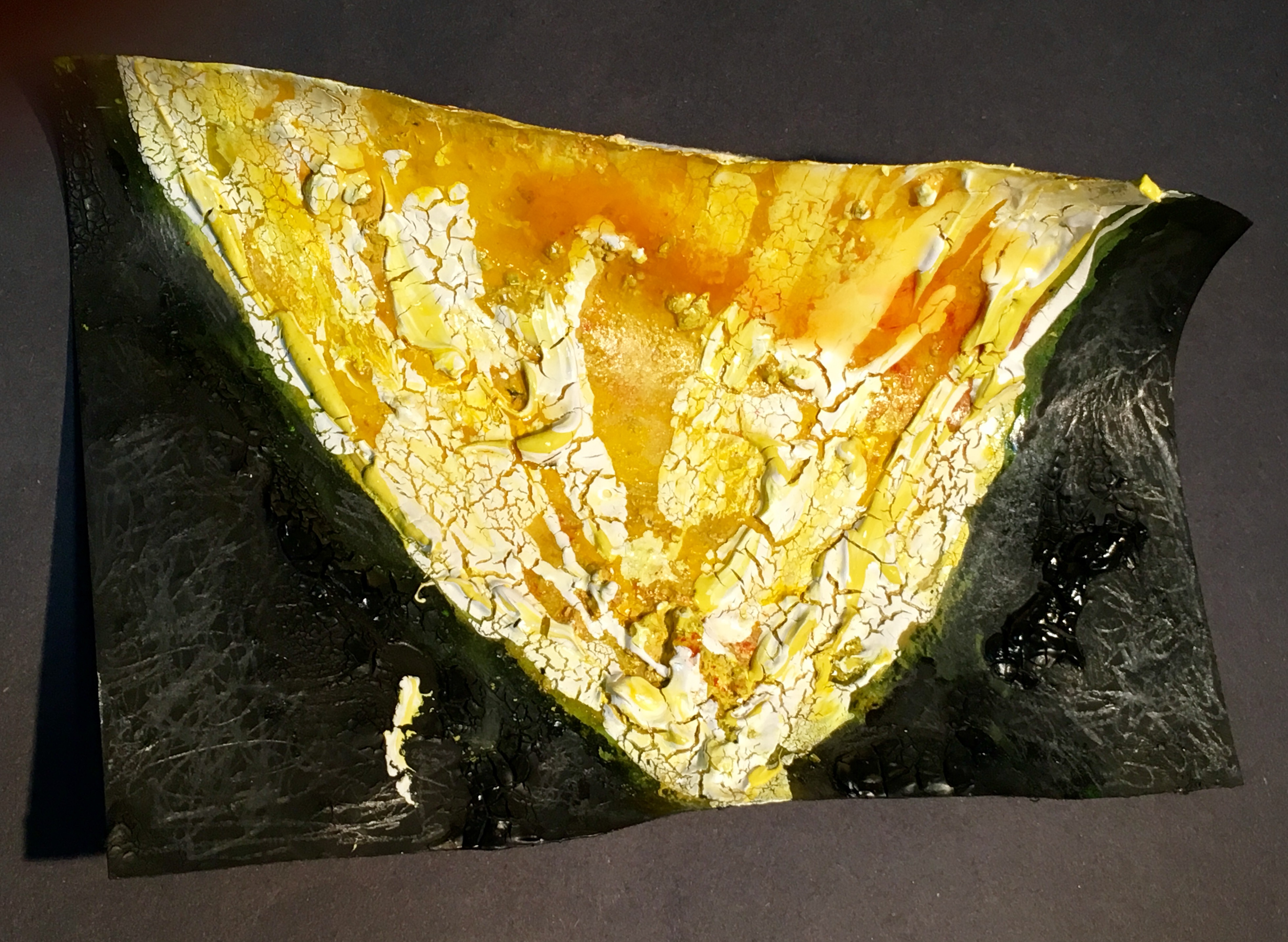








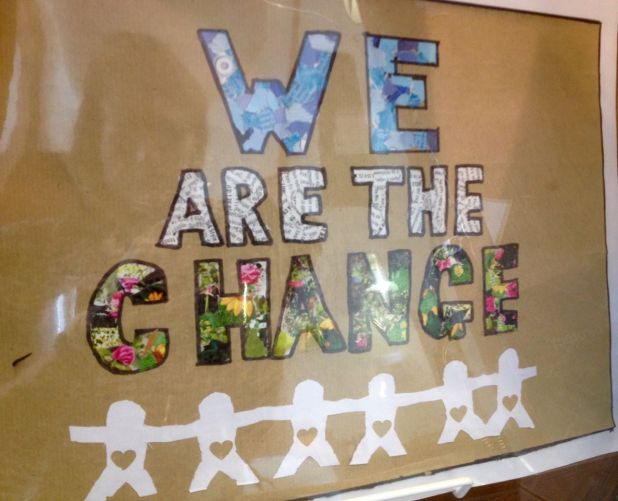



 followed. She must flee.
followed. She must flee.













































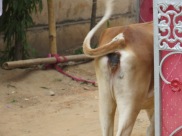
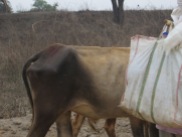






























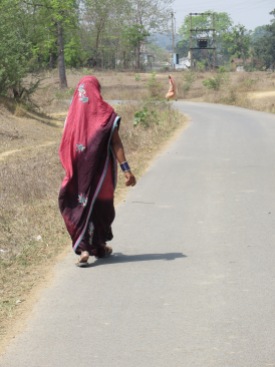
You must be logged in to post a comment.